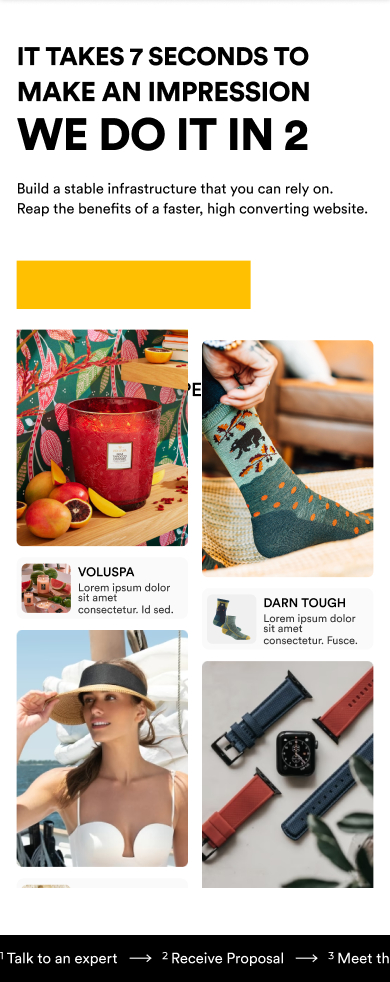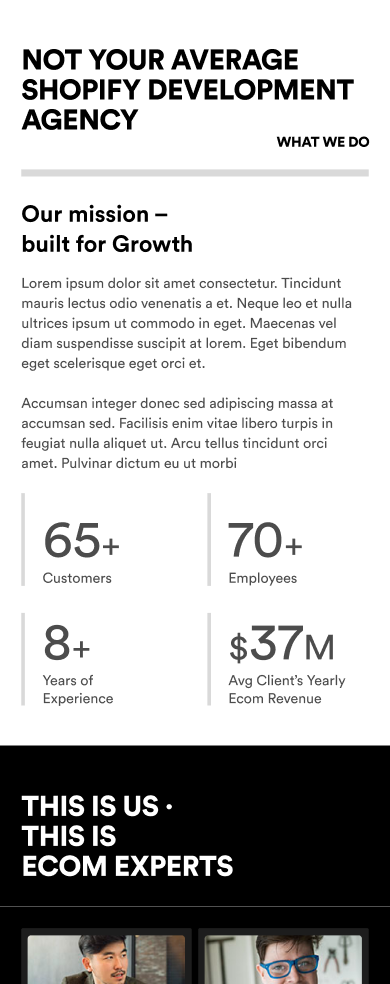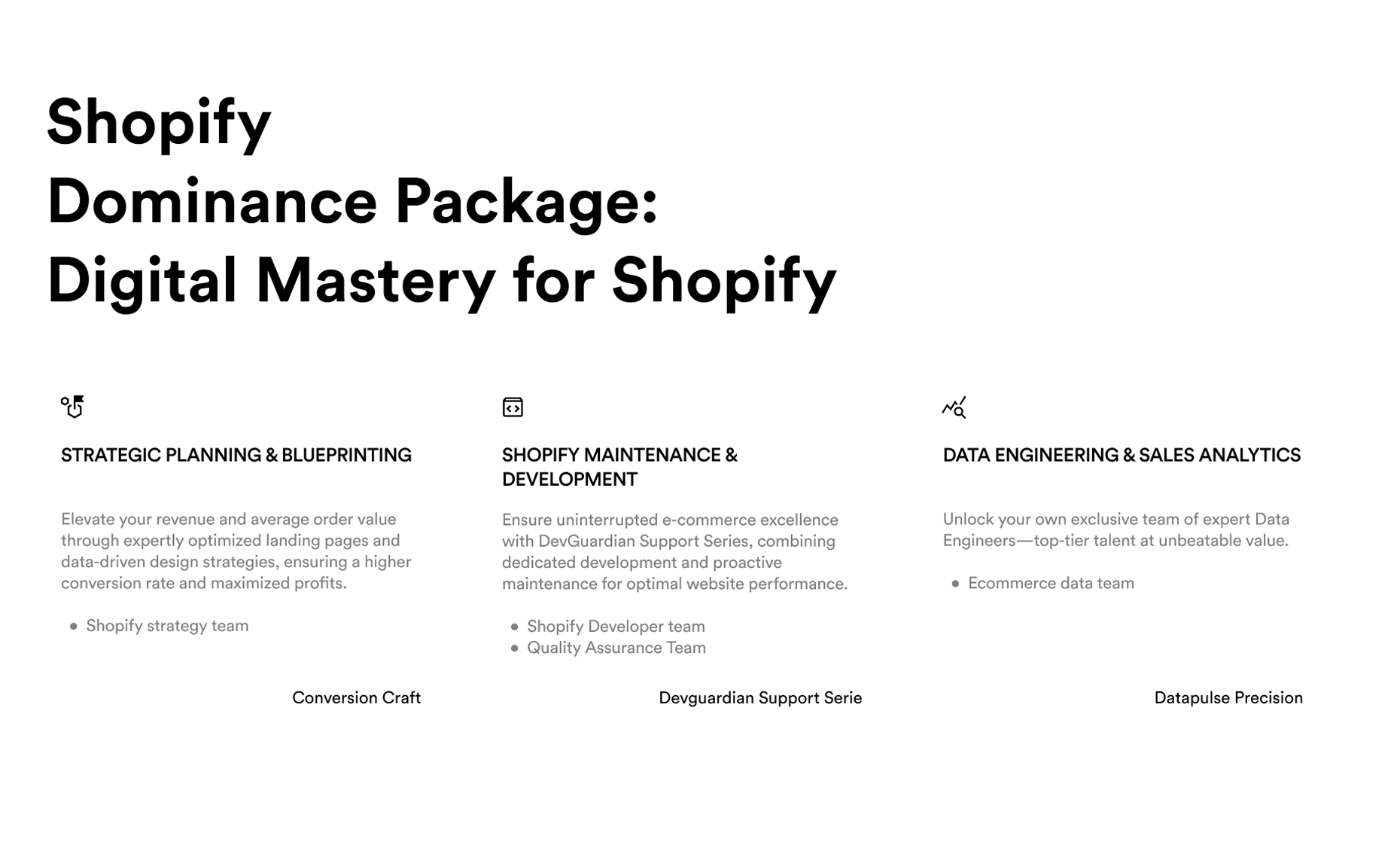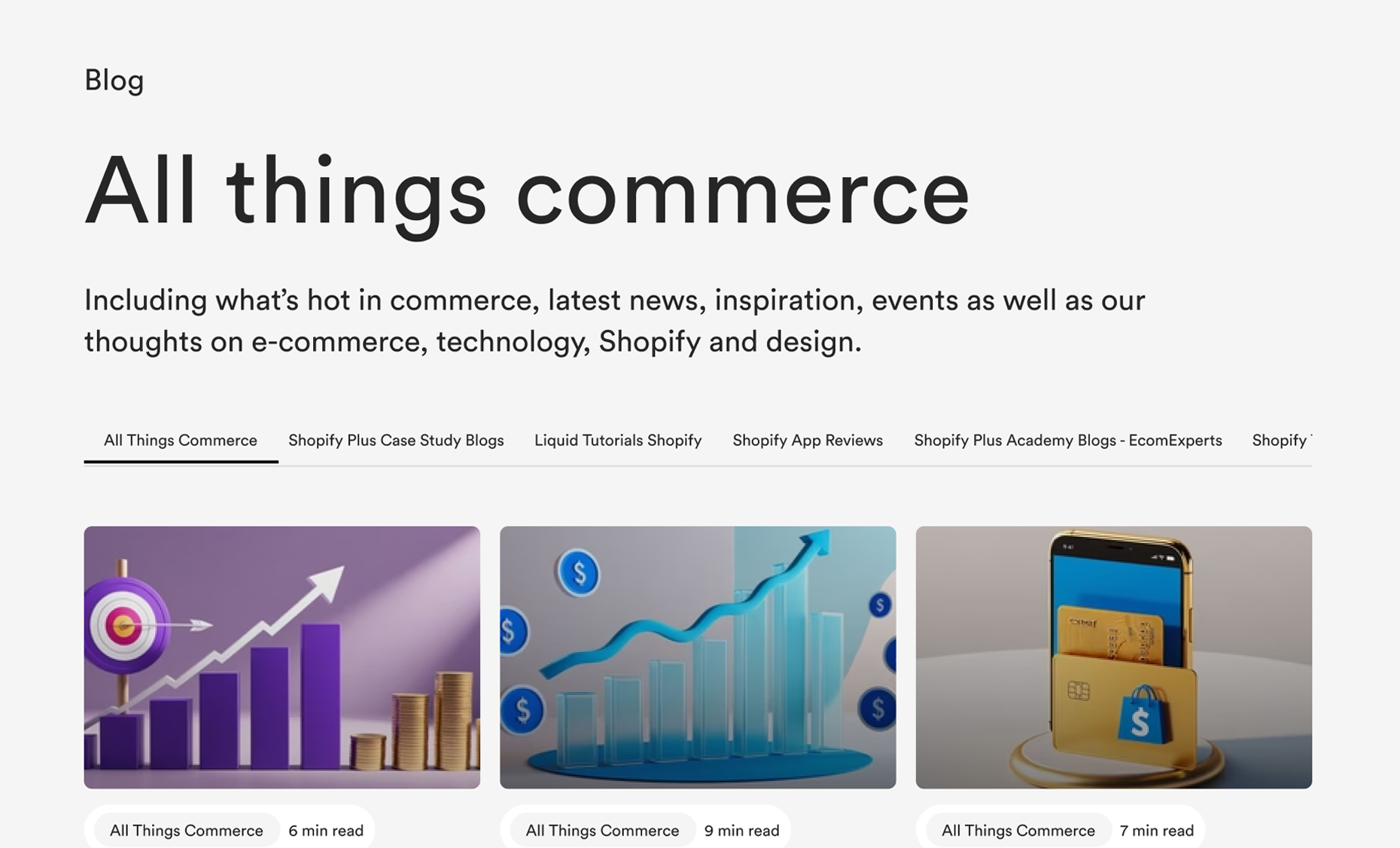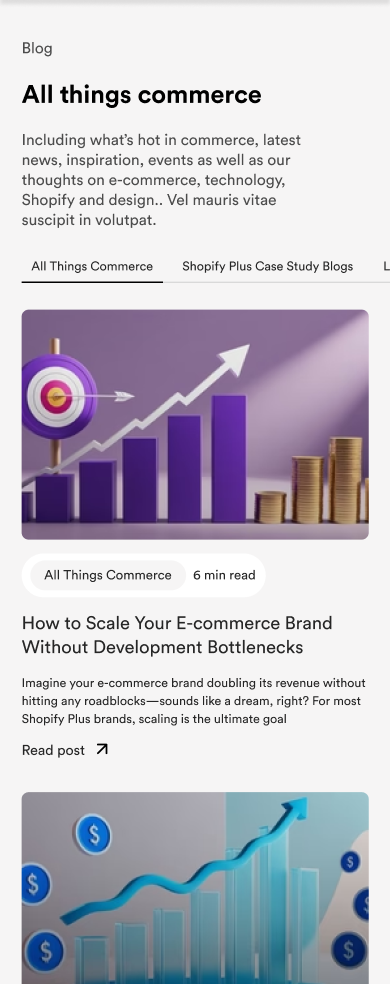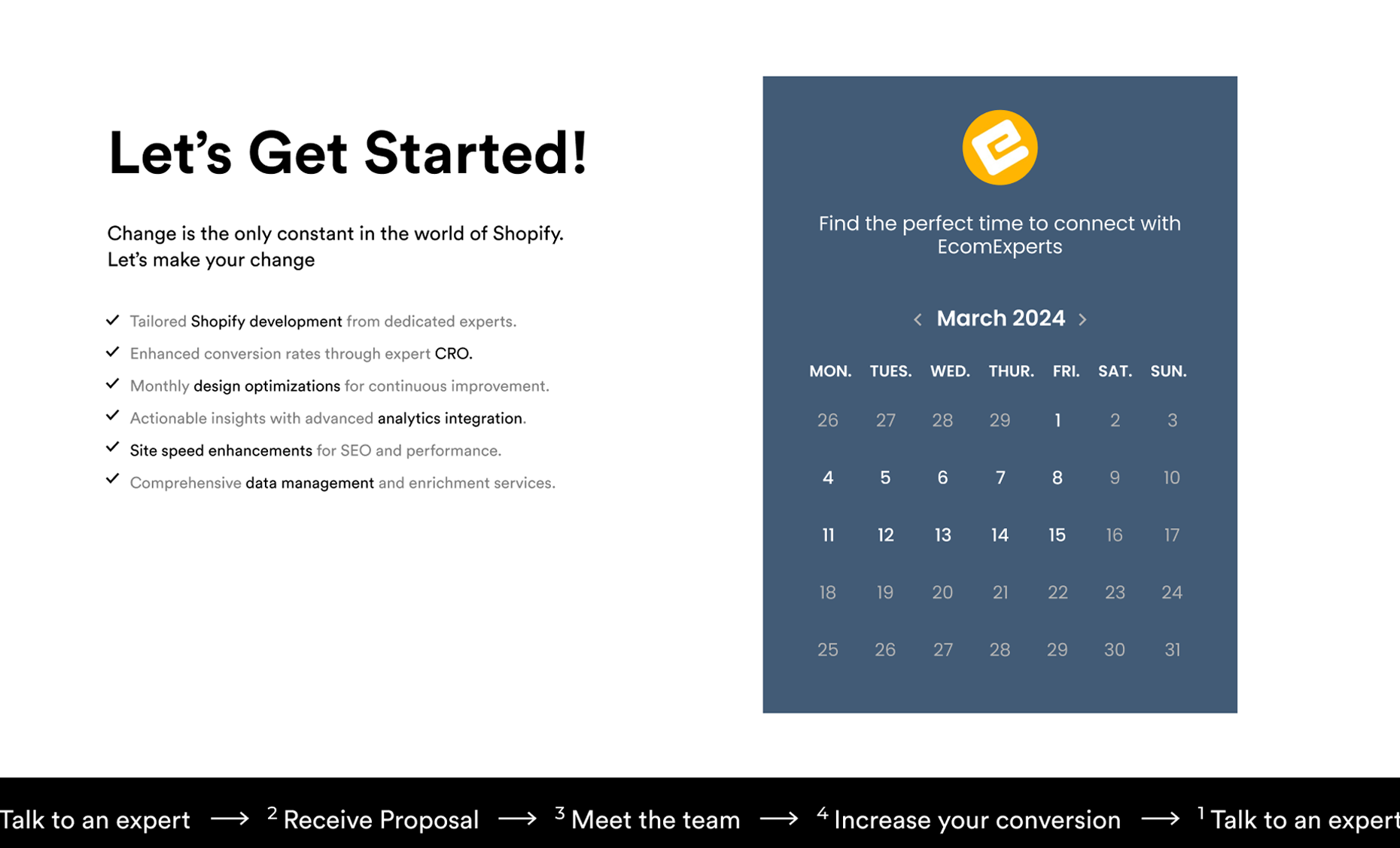What You'll Read in This Blog
- The Shift From Checkout Liquid to Checkout Extensibility
- What is Shopify Checkout Liquid?
- What is Shopify Checkout Extensibility?
- Key Difference Between Checkout Extensibility vs Checkout Liquid
- Why You Should Upgrade to Checkout Extensibility
- How to Upgrade From Checkout Liquid to Checkout Extensibility
- Best Practices for Using Shopify Checkout Extensibility
- Conclusion
- FAQs
Understanding the Shift: From Checkout Liquid to Checkout Extensibility
The checkout process is a critical element for any e-commerce store, and Shopify has made significant advancements to ensure merchants have the best tools available. Checkout Liquid, Shopify’s previous system, allowed some customization but often required merchants to edit code directly. Now, Shopify is phasing out Checkout Liquid in favor of the more powerful and flexible Checkout Extensibility.
In this blog, we’ll dive into why this transition is happening, the key differences between the two systems, and why upgrading to Checkout Extensibility is essential for your Shopify store’s success. By the end, you’ll have a comprehensive understanding of how Checkout Extensibility improves flexibility, scalability, and security for your checkout process.
What is Shopify Checkout Liquid?
Before diving into the benefits of Checkout Extensibility, it’s essential to understand the system it’s replacing: Checkout Liquid.
Checkout Liquid was Shopify's original solution for merchants looking to customize their checkout pages. It allowed developers to directly modify the HTML and Liquid code within Shopify's backend to create a unique checkout experience. This system provided flexibility for merchants who needed specific design elements or checkout functionalities, but it also came with significant limitations.
Key Characteristics of Checkout Liquid:
- Direct Code Customization: Merchants using Checkout Liquid could make customizations by altering the backend code directly. This allowed for detailed control over the checkout experience but often required technical knowledge or a developer's assistance.
- Risk of Code Conflicts: One of the biggest drawbacks of Checkout Liquid was that custom code could conflict with Shopify’s regular platform updates. When Shopify rolled out system-wide changes, customized checkouts built on Checkout Liquid were at risk of breaking, causing compatibility issues or even checkout failures.
- Lack of Scalability: While Checkout Liquid allowed some customization, it wasn’t designed for scalability. Merchants could only modify checkout code at a basic level, which limited their ability to implement advanced features like dynamic pricing or multi-step checkouts.
- Manual Maintenance: Customizations made through Checkout Liquid required ongoing manual maintenance. As Shopify continued to roll out updates or introduce new features, merchants had to ensure that their custom code remained compatible.
While Checkout Liquid served its purpose in the early stages of Shopify’s growth, it has become evident that a more scalable, secure, and flexible solution is necessary to meet the demands of modern e-commerce stores. That’s where Checkout Extensibility comes in.
What is Checkout Extensibility?
As Shopify's e-commerce platform evolved, so did the need for a more robust, flexible, and scalable way to manage checkout customization. This led to the development of Checkout Extensibility, a modern framework that allows merchants to easily customize their checkout process without the risks and limitations of Checkout Liquid.
Checkout Extensibility leverages Shopify's app ecosystem and APIs, empowering merchants to create a personalized checkout experience while maintaining compatibility with Shopify's regular updates. It eliminates the need to modify backend code directly, making it safer, more scalable, and easier to manage.
Key Characteristics of Checkout Extensibility:
-
App-Based Customization:
- Unlike Checkout Liquid, which required direct code changes, Checkout Extensibility allows merchants to customize their checkout using apps that can be installed and configured in Shopify’s admin panel. This makes checkout customization accessible to non-technical users.
-
Future-Proof and Upgrade-Safe:
- Shopify’s updates no longer jeopardize your customizations. With Checkout Extensibility, Shopify updates the platform’s core features, while customizations remain intact because they are built and maintained through external apps. This means no more worries about code conflicts or broken checkout flows after updates.
-
Scalability and Flexibility:
- The Checkout Extensibility API allows for more advanced customizations and integrations, making it easier for merchants to scale as their business grows. Whether you want to implement dynamic pricing, unique shipping options, or custom fields, Checkout Extensibility provides the tools to do so without altering the core checkout code.
-
Enhanced Security:
- By using Checkout Extensibility, merchants can ensure that their checkout process remains secure. Since customizations are handled through vetted Shopify apps, there’s a reduced risk of exposing vulnerabilities that may occur with custom-coded solutions.
-
Custom Branding and Design:
- With Checkout Extensibility, merchants can easily customize the look and feel of their checkout page to align with their brand using Shopify’s Branding API. This includes changing fonts, adding logos, and altering color schemes, providing a seamless and branded checkout experience.
Why This Matters:
The introduction of Checkout Extensibility signals a significant shift for Shopify merchants. It’s designed to help businesses grow without worrying about the technical limitations of Checkout Liquid, allowing merchants to focus on providing a superior shopping experience for their customers.
The next section will dive into the key differences between Checkout Extensibility and Checkout Liquid, explaining why Checkout Extensibility is the future for Shopify store owners.
Key Differences Between Checkout Extensibility and Checkout Liquid
Now that we've covered the basics of both Checkout Liquid and Checkout Extensibility, it's time to dive deeper into the key differences between the two. Understanding these distinctions is crucial for merchants considering whether to upgrade to Shopify's new checkout solution.
1. Ease of Use
Checkout Liquid required merchants to have a solid understanding of coding, as customizations were made by directly modifying the Liquid code within the Shopify admin. This meant that even small changes, such as adding custom fields or modifying the layout, needed developer expertise.
On the other hand, Checkout Extensibility allows for no-code or low-code solutions by utilizing apps from the Shopify ecosystem. Merchants can now easily install, configure, and update checkout customizations without needing to write or edit any code. This makes it significantly more user-friendly, especially for merchants who don’t have a development team.
2. Scalability and Flexibility
While Checkout Liquid provided some level of customization, it was limited in its flexibility, especially as businesses grew and required more complex functionalities, such as dynamic shipping rates or advanced validation processes.
Checkout Extensibility, however, is built with scalability in mind. By utilizing Shopify's APIs and pre-built apps, merchants can customize everything from branding to payment options, while still maintaining seamless integration with Shopify’s core features. As your business grows, Checkout Extensibility adapts to your needs without breaking your checkout process.
3. Maintenance and Updates
One of the biggest issues with Checkout Liquid was that customizations were vulnerable to breaking every time Shopify rolled out an update. Merchants had to ensure that their custom code was compatible with new features or system updates, which often required ongoing maintenance and technical support.
With Checkout Extensibility, Shopify’s updates no longer affect customizations. Instead, all customizations are handled through apps, which are maintained and updated by the app developers. This means that merchants don't have to worry about their customizations breaking after an update—everything is managed seamlessly.
4. Security
Since Checkout Liquid involved directly modifying Shopify’s code, it posed a risk of security vulnerabilities. Improper coding could inadvertently introduce weaknesses into the checkout process, potentially leading to issues with payment security or customer data protection.
Checkout Extensibility addresses these concerns by isolating customizations from the core checkout code. With all changes handled through vetted apps, merchants can rest assured that their checkout process remains secure. This separation of core functionality and customizations also helps ensure compliance with Shopify's stringent security protocols.
5. Long-Term Support
As Shopify continues to evolve, Checkout Liquid is being phased out. Merchants still using it will need to migrate to Checkout Extensibility by Shopify's deadlines to ensure they continue to receive support and updates. Shopify has made it clear that Checkout Extensibility is the future of their platform, and merchants will need to make the switch to stay current with the latest features and security measures.
By contrast, Checkout Extensibility is fully supported by Shopify and will continue to evolve as the platform grows. This ensures that merchants who upgrade now will benefit from future improvements and integrations without having to worry about obsolescence
Why You Should Upgrade to Checkout Extensibility
Now that we’ve established the major differences between Checkout Liquid and Checkout Extensibility, it’s important to highlight the tangible benefits that come with upgrading to this new framework. Moving to Checkout Extensibility offers merchants a future-proof solution with enhanced flexibility, security, and ease of use, all while supporting better customer experiences.
1. Enhanced Security and Maintenance
With Checkout Liquid, any changes made to the core code of the checkout process introduced the risk of breaking customizations during Shopify’s updates. This led to increased maintenance efforts and possible vulnerabilities in your store's checkout process. Checkout Extensibility eliminates this issue entirely.
By isolating customizations through apps, Shopify ensures that system updates no longer disrupt your checkout functionality. This creates a future-proof solution where your checkout customizations remain secure and stable, even during regular platform updates.
2. Easier Customization Without Technical Expertise
Checkout Liquid customizations often required the help of a developer, which increased both costs and complexity. Even simple modifications like adding custom fields or adjusting branding required knowledge of Liquid coding.
Checkout Extensibility, on the other hand, removes the technical barriers to customization. By leveraging Shopify's app ecosystem, merchants can easily customize their checkout page without writing or editing code. Everything from adding custom fields to modifying the checkout layout can be done through apps and the Shopify admin interface.
3. Streamlined Customer Experience
Customizing the checkout experience is essential for reducing cart abandonment and improving conversions. Checkout Extensibility enables merchants to create a tailored checkout process that meets the specific needs of their business. This includes adding custom fields for things like delivery instructions, gift notes, or membership IDs, and providing customers with more personalized options at checkout.
Moreover, upselling and cross-selling features are easily integrated into the checkout flow, which can increase average order values. The app-based nature of Checkout Extensibility makes it easy to experiment with these customizations and adapt them based on customer behavior.
4. Brand Consistency Across the Entire Shopping Experience
Your checkout page is a critical point in the customer journey, and it should reflect the branding and aesthetics of your store. Checkout Extensibility allows merchants to customize the checkout’s branding seamlessly through the Branding API, so your logo, colors, and fonts can be integrated directly into the checkout flow. This helps create a cohesive shopping experience that builds trust and reduces friction for your customers.
5. Unlocking the Full Potential of Shopify Plus
Checkout Extensibility is available exclusively to Shopify Plus merchants. By upgrading to Shopify Plus, you not only get access to Checkout Extensibility, but you also unlock a host of other advanced features like Shop Pay, which offers optimized conversion rates and faster checkout processes. Shop Pay alone converts 1.72x better than regular guest checkouts.
This access to advanced tools and customizations ensures that your store stays competitive in the fast-paced world of e-commerce.
In Summary:
Upgrading to Checkout Extensibility is no longer just an option but a necessity for merchants who want to stay competitive, offer seamless customer experiences, and future-proof their Shopify store. With easier customization, enhanced security, and support for advanced features, Checkout Extensibility offers a scalable solution that grows with your business.
How to Upgrade from Checkout Liquid to Checkout Extensibility
If you're still using Checkout Liquid, upgrading to Checkout Extensibility is essential to ensure that your Shopify store remains compatible with future updates and benefits from the advanced customization options available. Shopify has already set deadlines for phasing out Checkout Liquid, making this the perfect time to switch.
Here's a step-by-step guide to upgrading your Shopify checkout process from Checkout Liquid to Checkout Extensibility:
Step 1: Evaluate Your Current Customizations
- Begin by reviewing the customizations you currently have in place on your checkout page using Checkout Liquid. Identify which custom features you’d like to maintain or enhance after upgrading to Checkout Extensibility.
- Look at any custom fields, discounts, shipping rules, or checkout flow elements that may need to be recreated using the new app-based system.
Step 2: Choose the Right Apps
- Shopify’s Checkout Extensibility works through apps that handle different aspects of the checkout process, from branding to advanced field customizations and upselling.
- Identify the apps that suit your needs. For example:
- Custom branding apps allow you to modify colors, fonts, and logos.
- Checkout validation apps handle custom fields and validation logic (e.g., age verification or address validation).
- Upselling apps to integrate upsell and cross-sell options within the checkout page.
Step 3: Install the Necessary Apps
- Install the apps that provide the features you need for customizing your checkout experience.
- Shopify's App Store has a wide range of apps specifically designed to work with Checkout Extensibility. These apps allow you to make changes without needing to touch any code.
- Popular apps include options for custom fields, branded checkouts, advanced shipping rules, and payment methods.
Step 4: Customize Using the Shopify Admin Interface
- Once the apps are installed, you can easily configure your checkout page using the Shopify Admin interface. Customizations are applied through the apps you installed, allowing you to make real-time changes.
- You’ll be able to update the layout, add custom fields, tweak the branding, and implement upsells or cross-sells, all without needing developer intervention.
Step 5: Test Your New Checkout Setup
- Before going live, test your new checkout flow. Simulate the customer experience by completing test orders to ensure all customizations function as expected.
- Make sure to check for any missing elements, issues with third-party integrations, or hiccups in the payment and shipping processes.
Step 6: Monitor and Optimize
- After upgrading to Checkout Extensibility, it’s important to regularly monitor your store’s performance and the customer experience.
- Use analytics tools such as Shopify Analytics or Google Analytics to track conversion rates and identify any areas where further optimization is needed.
- If you notice any issues or performance drops, revisit the apps and configurations to fine-tune the checkout process.
Important Deadlines for Migrating
- Shopify has set key deadlines for phasing out Checkout Liquid. By August 2024, merchants must fully migrate to Checkout Extensibility if they wish to maintain a customizable checkout experience. Failure to upgrade could result in loss of customizations and checkout functionality.
Best Practices for Using Shopify Checkout Extensibility
Now that you've upgraded to Checkout Extensibility, it’s time to make the most of its capabilities. While the upgrade offers flexibility and security, optimizing how you use these features will help you create an even better checkout experience for your customers. Here are some best practices for customizing your checkout with Checkout Extensibility:
1. Custom Branding for a Seamless Experience
The checkout process should feel like a continuation of your store’s overall brand experience. With Checkout Extensibility, you can fully integrate your brand’s fonts, colors, logos, and visual elements through the Branding API.
Best Practice:
- Use your store’s brand colors and fonts on the checkout page to maintain consistency throughout the shopping journey. This builds trust and reduces checkout abandonment by offering a familiar experience.
- Avoid overwhelming the checkout with too many brand elements that can distract from the main goal—conversion. Focus on keeping the checkout page simple and user-friendly.
2. Leverage Custom Fields to Gather Important Information
Whether it’s capturing delivery preferences, personalized gift messages, or membership numbers, custom fields are a powerful way to collect important information at checkout. With Checkout Extensibility, you can easily add custom fields without breaking the core checkout code.
Best Practice:
- Make sure any additional fields are relevant and useful. Adding too many unnecessary fields can slow down the checkout process and frustrate customers. Keep it streamlined by only collecting the most crucial data.
- If possible, make custom fields optional rather than mandatory. This ensures customers who prefer a quicker checkout can proceed smoothly.
3. Use Checkout Validation to Ensure Compliance
Certain businesses may require extra validation at checkout. For example, age-restricted products, such as alcohol, may require customers to provide proof of age. With Checkout Extensibility, you can implement Checkout Validation to ensure compliance with your business rules.
Best Practice:
- Implement validations that are necessary for compliance, such as age or address verification, without overcomplicating the process for users who don’t need to complete them. This keeps the checkout flow smooth for the majority of customers while ensuring legal compliance where needed.
- Avoid adding too many validation steps, as these could disrupt the flow and increase cart abandonment.
4. Optimize for Upselling and Cross-Selling
Checkout is the perfect time to offer upsells and cross-sells because customers are already committed to making a purchase. By integrating upselling or cross-selling features, you can boost average order value (AOV) at the final step of the buying journey.
Best Practice:
- Offer relevant upsells, such as complementary products or services, during checkout. Ensure the product recommendations are related to the customer’s cart items and don’t clutter the page with irrelevant suggestions.
- Use limited-time offers or discounts to encourage additional purchases. Highlight any urgency by showing countdown timers for promotional offers during the checkout process.
5. Streamline Payment and Shipping Options
With Checkout Extensibility, you can offer multiple payment methods or location-based shipping options, giving your customers flexibility and reducing friction.
Best Practice:
- Offer a variety of payment methods like credit cards, Shop Pay, PayPal, or local payment options to cater to a diverse customer base. Making the payment process as easy as possible is key to minimizing cart abandonment.
- Customize shipping options based on customer locations, offering free shipping for certain regions or local delivery for nearby customers. This reduces friction in the final purchasing steps and encourages more conversions.
By following these best practices, you can fully leverage Shopify Checkout Extensibility to create a checkout experience that is fast, flexible, and secure. Whether you’re focusing on custom branding, improving user convenience, or upselling for higher order values, these strategies will help optimize your checkout process and improve overall conversion rates.
Conclusion
Upgrading from Checkout Liquid to Checkout Extensibility is no longer just an option—it’s a necessity for merchants looking to future-proof their Shopify store. Shopify is phasing out Checkout Liquid, making Checkout Extensibility the preferred and supported solution moving forward. This modern approach offers significant benefits, such as enhanced flexibility, scalability, and security, all while providing a more streamlined and user-friendly experience for both merchants and customers.
With Checkout Extensibility, you can:
- Customize your checkout page using apps without needing to edit code.
- Ensure that your customizations are upgrade-safe, meaning Shopify’s updates won’t interfere with your checkout setup.
- Optimize your checkout experience with custom fields, personalized branding, and upsell/cross-sell strategies.
- Comply with legal requirements, such as age validation, and ensure that your checkout is secure.
By following the steps outlined in this blog, you can ensure a smooth transition from Checkout Liquid and take advantage of all the enhanced features that Checkout Extensibility offers. From streamlining your checkout process to increasing conversions through customizations, the benefits are clear.
The sooner you upgrade, the sooner you’ll unlock the full potential of Shopify Plus and ensure your store is ready for future growth. If you need assistance with the migration process or customizing your checkout page, don’t hesitate to reach out to Ecom Experts, where we specialize in optimizing Shopify Plus stores to enhance performance and drive results.
FAQs
Q1. What is Checkout Extensibility?
A1. Checkout Extensibility is Shopify's framework that allows merchants to customize the checkout process using apps and APIs without modifying the core checkout code, making it more flexible and secure.
Q2. Why should I upgrade from Checkout Liquid?
A2. Checkout Liquid is being phased out and does not offer the same level of flexibility, security, or scalability as Checkout Extensibility. Shopify’s updates also pose a risk to Checkout Liquid customizations, which could break the checkout flow.
Q3. Is Checkout Extensibility only for Shopify Plus merchants?
A3. Yes, currently, Checkout Extensibility is exclusively available to Shopify Plus merchants. Upgrading to Shopify Plus unlocks a wide range of advanced features, including Checkout Extensibility.
Q4. How long do I have to upgrade from Checkout Liquid to Checkout Extensibility?
A4. Shopify has set a deadline for merchants using Checkout Liquid to upgrade by August 2024. After this date, customizations made through Checkout Liquid will no longer be supported.
Q5. What apps work with Checkout Extensibility?
A5. Shopify’s app ecosystem offers a variety of apps for custom fields, payment options, upselling, cross-selling, and more. These apps allow merchants to easily customize their checkout process to suit their business needs.



